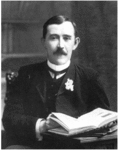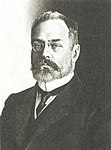1906 Russian legislative election
| |||||||||||||||||
All 497 seats in the State Duma of the Russian Empire | |||||||||||||||||
|---|---|---|---|---|---|---|---|---|---|---|---|---|---|---|---|---|---|
| |||||||||||||||||
| |||||||||||||||||

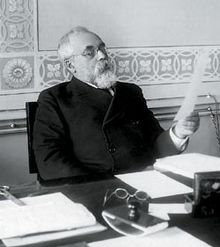
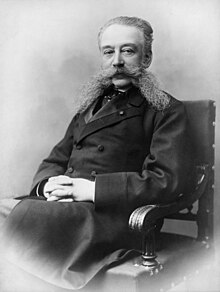
Legislative elections were held in the Russian Empire from 26 March to 20 April 1906 to elect the 497 members of the State Duma. The elections returned a significant bloc of moderate socialists and deputies from the liberal Kadet party, both of which demanded further reforms following the 1905 Russian revolution. For this reason, it is sometimes called the Duma of Public Anger (Дума народного гнева).
Due to its hostility to the autocratic Tsarist government, the elected Duma was dissolved by Nicholas II only ten weeks after first meeting.
Background[]
The State Duma was created in a wave of violent attacks against imperial officials and public upheaval, which culminated in a national strike in October 1905 as part of the Russian Revolution of 1905. This paved the way for Russia's first parliament. With the nation's infrastructure all but paralyzed, Tsar Nicholas II signed a historic manifesto of 17 October 1905, promising civil rights to the population and creating Russia's first elected state legislature. This parliament, named the duma, would have the right of veto over laws, meaning that no bills could become law without the duma's approval.[1]
The elections were boycotted by the some socialist groups and the Bolsheviks. Among the political parties formed were the peasant leaders' Labour Group (Trudoviks), liberal-intelligentsia Constitutional Democratic party (the Kadets), the less liberal Union of October 17 (the Octobrists), and the positively reactionary Union of Land-Owners.
The Kadets wanted the reforms introduced in the October Manifesto to go further, desiring a written constitution and guarantees of a constituent assembly.[2] The Kadets campaigned on a platform advocating a ministry responsible to the Duma and possessing its confidence, the introduction of a four tail suffrage (direct, secret, universal and equal), with no discrimination as to religion, nationality, class or sex, the abolition of the death penalty and an amnesty for political prisoners.[3] Their primary political aim was to build the duma into a strong, popular body similar to the British House of Commons.[4]
Incoming Prime Minister Pyotr Stolypin aimed to use the Duma to pass considerable reform.[5][6] He hoped that land reform would modernise Russia and make it more competitive with other European powers.[5][6] He also hoped to introduce reforms that would increase industrial output, which later became very successful.[6]
Voting system[]
The electoral laws were promulgated in December 1905 and introduced franchise to male citizens over 25 years of age, and electing through four electoral colleges. The elections were therefore not universal as they excluded women, soldiers, officers and some nationalities.[7] Nor were they equal since the constituencies differed greatly in size, and six curia were established which gave much more weight to the votes of landowners and peasants (those most loyal to the Tsar) than workers.[7]
The voting system was further complicated by the fact that representatives were not always directly elected.[8] Only nobles elected their representatives directly to the Duma, while the rest of the electorate elected representatives to an electoral college, which in turn elected Duma members.[8] As a result, one vote by a noble was equivalent to two by townsmen, fifteen by peasants and 45 by urban workers.[8]
Composition[]
As official records are vague about the party composition of the Duma, these figures must be understood as educated guesswork. Among the Leftists, Kadets alleged that 2 members belonged to the Social-Democrats and 17 were Socialist Revolutionaries.[9] This was despite the fact that the Social Democrat and SR parties both boycotted the elections.[4] More recent records have shown that there were 17 Menshevik Social Democrats, who collaborated with the Kadets.[10]
There were over 100 members who did not affiliate themselves with any party.[4] Most of these deputies were leftist peasants.[4]
 | ||
| Party | Seats | |
|---|---|---|
| Constitutional Democratic Party | 184 | |
| Trudoviks and leftists | 124 | |
| Union of October 17 | 38 | |
| Rightists | 7 | |
| National minorities and religious groups | 32 | |
| Independents | 112 | |
| Total | 497 | |
| Source: Political Parties in the Russian Dumas | ||
Elected members[]
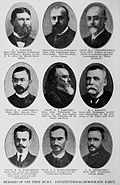
Constitutional Democrats.

Constitutional Democrats.
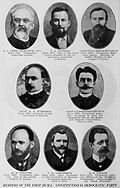
Constitutional Democrats.

Democratic Reform Party/Labour Group.

Labour Group.

Labour Group/ Social Democrats.
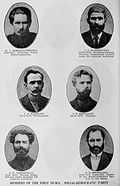
Social Democrats.
Out of the 36 Duma members from the Congress Kingdom, 34 were Poles who subsequently joined the Polish Club. Another 19 Polish Duma members were elected in Belarus and Ukraine.
There were also twelve Jewish deputies. The Jewish Labour Bund had made an electoral agreement with the Lithuanian Labourers' Party (Trudoviks), which resulted in the election to the Duma of two (non-Bundist) candidates in the Lithuanian provinces: Shmaryahu Levin for the Vilnius province and Leon Bramson for the Kaunas province.[11] Among the other Jewish deputies were Maxim Vinaver, chairman of the League for the Attainment of Equal Rights for the Jewish People in Russia (Folksgrupe) and cofounder of the Constitutional Democratic Party (Kadets), Nissan Katzenelson (Courland province, Zionist, Kadet), Moisey Ostrogorsky (Grodno province, Kadet), attorney Simon Yakovlevich Rosenbaum (Minsk province, Zionist, Kadet), Mikhail Isaakovich Sheftel (Ekaterinoslav province, Kadet), Bruk . Three of the Jewish deputies joined the Labour faction, the nine other joined the Kadet fraction.[12] According to Rufus Learsi, five of them were Zionists, including Shmaryahu Levin, and Simon Yakovlevich Rosenbaum.[13]
Two out of twelve, (Poltava province) and Mikhail Herzenstein, both from the Constitutional Democratic Party, were assassinated by the Black Hundreds antisemite terrorist group.[14]
Majority[]
Although no one party held a majority of seats after the election, the Kadets became the leading party in the First Duma, and formed a voting majority by virtue of a union with the Trudoviks to their left, some groups representing ethnic minorities, and about 20 non-party deputies.[15] This loose voting coalition would hold together for the entirety of the First Duma.[15]
Aftermath[]
Fundamental Laws[]
In April 1906, only weeks after the election, the Sergei Witte's Cabinet issued the Fundamental Laws of 1906, setting the limits of this new political order. The tsar was confirmed as absolute leader, with complete control of the executive, foreign policy, church, and armed forces. The State Duma was shifted, becoming a lower chamber below the reformed State Council of Imperial Russia, which had been the Russian legislative body since 1810. Legislation had to be approved by the Duma, the Council and the emperor to become law – but in "exceptional conditions" the government could bypass the Duma. The Fundamental Laws introduced a special provision, Article 87, which allowed the government to ex officio issue new legislation during breaks between sessions of the State Duma. Later on, Tsar Nicholas II would frequently use this provision in order to carry out the laws that had not been supported by the State Duma. The tsar also maintained his rights on ministers' appointments.[7]
Session[]
The State Duma (and the State Council - the upper house) convened for the first time on 27 April 1906. On 10 May Sergey Muromtsev, a Law Professor at the Saint Petersburg University, was elected President of the Duma. Professor Muromtsev, a leading figure of the liberal Kadet party, tried to maintain some degree of order and dignity in this difficult assembly. He was much praised for the way he chaired the debates, always keeping to the strictest legality, but always pursuing a constitutional and anti-autocratic agenda.
The anti-autocracy was evident from the first days of the First Duma. In response to the Tsar's opening speech on 5 May, the assembly called for amnesty for political prisoners, real political freedom and equality. Eight days later, the chairman of the Council of Ministers, Prime Minister Ivan Goremykin, rejected all these claims. The State Duma in turn adopted a resolution of non confidence of the government and demanded Prime Minister Goremykin's resignation. During the 72-day session of the First Duma, a total of 391 requests about illegal actions of the government were filed. Only two laws were passed: a ban on capital punishment and measures to help provinces that had been hit by a famine. The latter was the only law initiated by the government which was approved by delegates.[7]
The issue discussed most by the First Duma was land reform.[7]
Dissolution and protests[]
Due to the growing tensions between the State Duma and Tsar Nicholas II's Council of Ministers, prominently Prime Minister Goremykin, the assembly was dismissed by Imperial ukase after only 10 weeks, on 21 July 1906. The Tsar said that instead of drawing up laws, the deputies were investigating the authorities and thereby intruding on his authority. The government was also angered by the passing of the vote of no confidence in Prime Minister Ivan Goremykin.[5]
In a sign of frustration at the dissolution, members of the liberal Cadets party declared that the elected Duma should continue its work and proposed that it should retreat to Vyborg, Finland. Duma representatives subsequently released the Vyborg Manifesto, which criticised the government and called for citizens to protest by refusing to join the army or pay taxes.[5][16] Despite the hopes of the Kadets and the fears of the government, there was no widespread popular reaction to the Vyborg Manifesto. However, an assassination attempt on Pyotr Stolypin led to the establishment of field trials for terrorists. For signing this Vyborg Appeal, the Cadets (including Duma President Muromtsev) were arrested and imprisoned for some months - and consequently excluded from future Duma elections and made ineligible to vote.[5] This paved the way for an alternative makeup for the Second Duma of 1907, and greatly reduced the power of the Cadets.[5]
Some analysists have asserted that the dissolution of the First Duma by the government was a mistake, since it had a strong centre and could perhaps have acted effectively with the government given time.[17]
See also[]
- State Duma of the Russian Empire
- State Council of Imperial Russia
- Russian Council of Ministers
- Russian Constitution of 1906
- Sergey Witte
References[]
- ^ Williams 1994, p. 152.
- ^ "The October Manifesto and the Fundamental Laws". BBC Bitesize. BBC. Retrieved 14 March 2021.
- ^ Williams 1994, p. 153.
- ^ a b c d Walsh 1950, p. 145.
- ^ a b c d e f "Attempts to strengthen Tsarism, 1905-1914". BBC Bitesize. Retrieved 6 March 2021.
- ^ a b c "Reforms of Stolypin". BBC Bitesize. BBC. Retrieved 14 March 2021.
- ^ a b c d e "History of the State Duma". duma.gov.
- ^ a b c Culpin 2012, p. 55.
- ^ Walsh 1950, pp. 144–145.
- ^ Williams 1994, p. 154.
- ^ Levin, Dov (2000). The Litvaks: a short history of the Jews in Lithuania. Berghahn Books. p. 283. ISBN 978-1-57181-264-3.
- ^ Frumkin, Jacob G; Aronson, Gregor; Golʹdenveĭzer, Aleksey Aleksandrovich (1966). Russian Jewry: 1860-1917. New York City: T. Yoseloff.
- ^ Learsi, Rufus (2007). Fulfillment - The Epic Story of Zionism: The Authoritative History of the Zionist Movement from the Earliest Days to the Present Time. Read Books. p. 444. ISBN 978-1-4067-0729-8.
- ^ "12 July 1909". American Jewish Yearbook (July 1, 1909 to June 30, 1910) (PDF). p. 136.
The Russkoe Znamya declares openly that "Real Russians" assassinated Herzenstein and Iollos with knowledge of officials, and expresses regret that only two Jews perished in crusade against revolutionaries.
- ^ a b Galai, Shmuel (2007). "THE IMPACT OF THE VYBORG MANIFESTO ON THE FORTUNES OF THE KADET PARTY". Revolutionary Russia. 20 (2): 197. doi:10.1080/09546540701633486. S2CID 143520139.
- ^ Culpin 2012, p. 56.
- ^ Shmuel, Galai (2010). "THE KADETS IN THE SECOND DUMA". Revolutionary Russia. 23 (1): 1. doi:10.1080/09546545.2010.483799. S2CID 144621650.
- Russian: State Duma of the Russian Federation Official site
- Russian: Сергей Андреевич Муромцев (Sergey Andreyevich Muromtsev)
Sources[]
- Culpin, Christopher (2012). The Russian Revolution, 1894‐1924 (Enquiring History Series ed.). Hodder Education. ISBN 978-1444144567.
- Walsh, Warren B. (1950). "Political Parties in the Russian Dumas". The Journal of Modern History. 22 (2): 144–150. doi:10.1086/237332. ISSN 0022-2801. JSTOR 1870883. S2CID 144439744.
- Williams, Beryl (1994). "The concept of the first Duma: Russia 1905–1906". Parliaments, Estates and Representation. 14 (2): 149–158. doi:10.1080/02606755.1994.9525857.
External links[]
- Phillips, Walter Alison (1911). . Encyclopædia Britannica. Vol. 23 (11th ed.). pp. 873–875.
- Legislative elections in Russia
- 1906 elections in Asia
- 1906 elections in Europe
- 1906 in the Russian Empire
- March 1906 events
- April 1906 events

